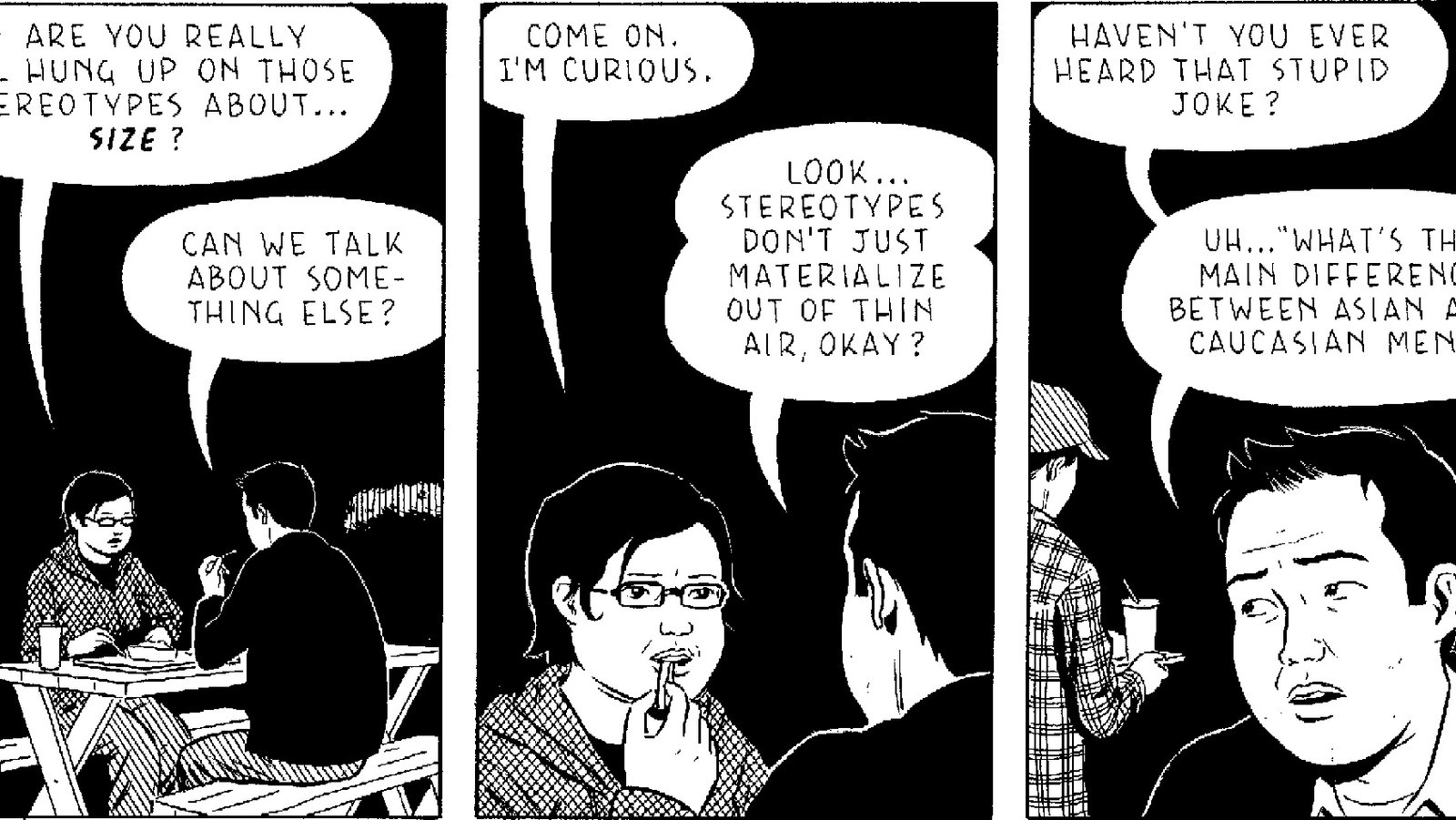Beyond Stereotypes: Creating Authentic Asian And Asian American Characters

Table of Contents
Understanding the Problem: Common Stereotypes and Their Harm
The portrayal of Asian and Asian American characters in media has a long history of relying on harmful stereotypes. These stereotypes not only misrepresent the diversity within these communities but also perpetuate harmful misconceptions and reinforce societal biases. Let's examine some of the most prevalent and damaging stereotypes:
-
The "Model Minority" Myth: This harmful stereotype paints all Asians and Asian Americans as inherently intelligent, hardworking, and successful, ignoring the struggles faced by many within these communities due to socioeconomic disparities, discrimination, and systemic inequalities. This ignores the wide spectrum of experiences and individual struggles.
-
The "Perpetual Foreigner" Trope: This stereotype casts Asian and Asian American characters as perpetually foreign, regardless of their citizenship or how long they’ve lived in their country. They are often depicted as lacking fluency in the dominant language, possessing an "exotic" accent, or being fundamentally different from the mainstream culture. This fosters a sense of otherness and prevents their integration into narratives as fully realized individuals.
-
Harmful Stereotypes in Film, Television, and Literature: Examples range from hypersexualized or submissive female characters to the perpetually nerdy or martial arts expert male characters. These limited portrayals erase the vast array of personalities, professions, and experiences within the Asian and Asian American communities.
-
The Lack of Complex and Diverse Asian and Asian American Characters: The absence of complex characters with realistic flaws and strengths reinforces the idea that Asians and Asian Americans are a monolithic group. This lack of representation limits the stories that can be told and the perspectives that are shared.
-
The Consequences of Perpetuating These Stereotypes: These stereotypical portrayals can have real-world consequences, contributing to discrimination, prejudice, and the marginalization of Asian and Asian American individuals.
Research and Representation: Doing Your Homework
Creating authentic Asian and Asian American characters requires dedicated research and a genuine commitment to accurate representation. Superficial generalizations are not sufficient; a deep understanding of the diverse cultures and experiences within these communities is crucial.
-
The Importance of Thorough Research Beyond Superficial Generalizations: Don't rely solely on existing stereotypes or limited online resources. Engage with the richness and complexity of individual cultures.
-
Engaging with Diverse Asian and Asian American Communities: Attend cultural events, engage in conversations with individuals from various backgrounds, and actively listen to their experiences.
-
Utilizing Primary Sources Such as Interviews, Books, and Documentaries: Seek out firsthand accounts from individuals within the communities you’re depicting to gain a deeper understanding of their perspectives and experiences.
-
Seeking Feedback from Cultural Consultants and Experts: Consulting with experts who can provide informed guidance and ensure cultural sensitivity throughout the creative process is vital.
-
The Value of Diverse Writing Teams and Perspectives: Assembling a writing team that reflects the diversity of the communities you're representing ensures a broader range of perspectives and prevents unintentional misrepresentations.
Creating Nuanced Characters: Beyond Surface-Level Traits
Authentic Asian and Asian American characters are more than just their ethnicity; they are complex individuals with unique personalities, motivations, and backstories.
-
Developing Well-Rounded Characters with Individual Personalities and Motivations: Give your characters individual strengths, weaknesses, aspirations, and fears. Don't let their ethnicity define their entire being.
-
Exploring the Complexities of Cultural Identity and Heritage: Understand that cultural identity is fluid and multifaceted. Explore how characters navigate their heritage in relation to their personal lives and societal contexts.
-
Showcasing a Range of Experiences within the Asian and Asian American Communities: Represent the socioeconomic, religious, and generational diversity within these communities. Don't present a single, homogenized experience.
-
Avoiding the Use of Stereotypes as Defining Characteristics: Ensure that your characters are not solely defined by stereotypes. Let their individual personalities and experiences shine through.
-
Creating Characters with Realistic Flaws and Strengths: Authentic characters are not perfect. They have flaws, make mistakes, and grapple with challenges—just like everyone else.
Language and Cultural Nuances: Avoiding Misrepresentation
Accurate portrayal extends to the nuances of language and cultural practices. Misrepresentation can be deeply offensive and damaging.
-
The Importance of Accurate Language and Dialogue: If depicting a specific language or dialect, ensure accuracy to avoid perpetuating harmful linguistic stereotypes. Consider using language consultants.
-
Understanding the Diverse Languages Spoken within Asian and Asian American Communities: Recognize that “Asian” is not a monolith; there is vast linguistic diversity within this population.
-
Avoiding Cultural Appropriation and Misrepresentation of Cultural Practices: Be mindful of the potential for cultural appropriation. Research thoroughly and respect the cultural significance of traditions and practices.
-
Seeking Guidance on Culturally Sensitive Issues from Experts: When in doubt, seek the guidance of cultural consultants or experts who can offer informed perspectives and help avoid unintended offense.
-
The Significance of Subtle Cultural Details in Character Development: Incorporate subtle cultural details that add depth and authenticity to your characters, but ensure this is done respectfully and avoids the use of harmful tropes.
Conclusion
Creating authentic Asian and Asian American characters requires diligent research, cultural sensitivity, and a commitment to moving beyond harmful stereotypes. By prioritizing accurate representation and showcasing the rich diversity of experiences within these communities, we can foster a more inclusive and equitable media landscape. Let's work together to create more authentic Asian and Asian American characters, fostering better representation and challenging harmful stereotypes in the media. Commit to creating more inclusive and nuanced storytelling. Learn more about effective representation and start crafting your own authentic Asian and Asian American characters today!

Featured Posts
-
 Graham Rahals Ultra Rare Porsche 911 Gt 3 Rs 4 0 A Performance Showcase
May 11, 2025
Graham Rahals Ultra Rare Porsche 911 Gt 3 Rs 4 0 A Performance Showcase
May 11, 2025 -
 Jeff Bezos Bond Poll The Overwhelming Choice For 007
May 11, 2025
Jeff Bezos Bond Poll The Overwhelming Choice For 007
May 11, 2025 -
 Unleash Your Inner Baba Yaga A John Wick Themed Las Vegas Adventure
May 11, 2025
Unleash Your Inner Baba Yaga A John Wick Themed Las Vegas Adventure
May 11, 2025 -
 Selena Gomezs Sassy Leather Dress Channel Her Movie Star Style
May 11, 2025
Selena Gomezs Sassy Leather Dress Channel Her Movie Star Style
May 11, 2025 -
 Tyreek Hill Vs Noah Lyles Michael Johnsons Take On The Hypothetical Race
May 11, 2025
Tyreek Hill Vs Noah Lyles Michael Johnsons Take On The Hypothetical Race
May 11, 2025
